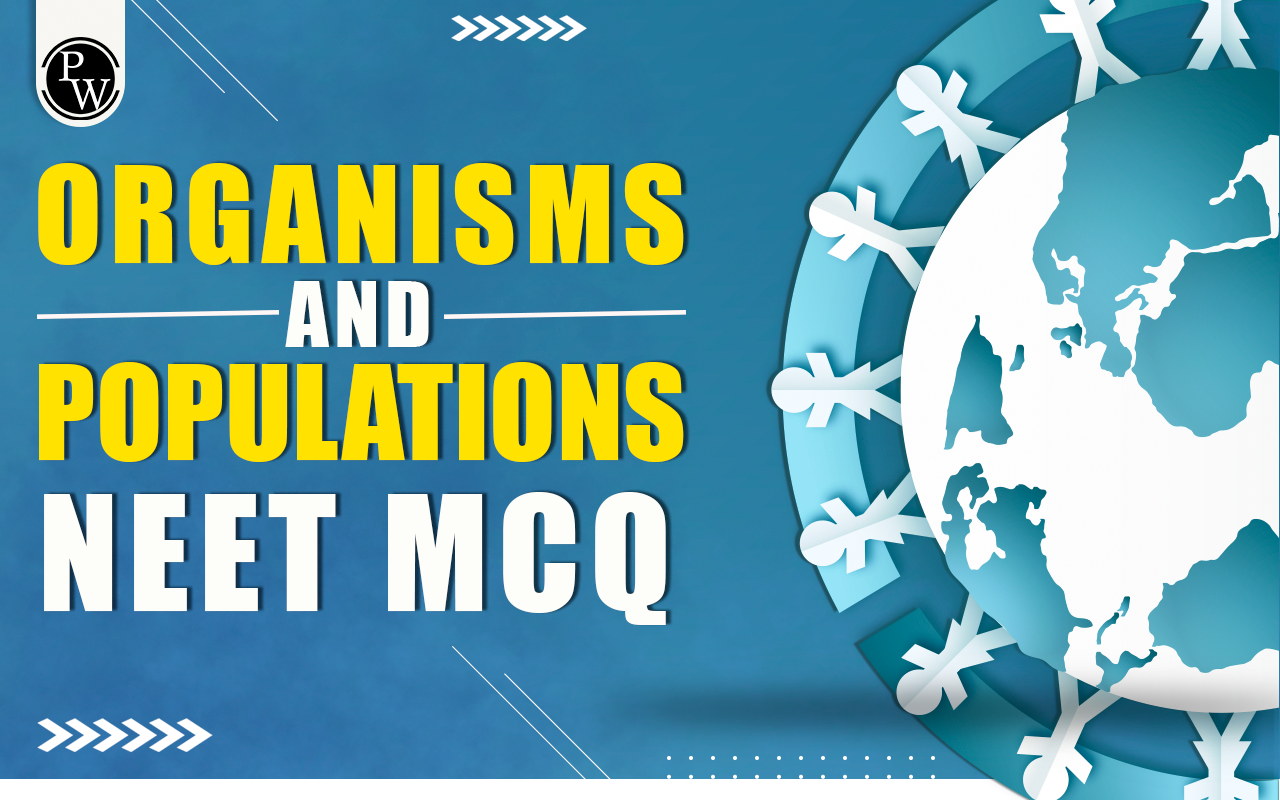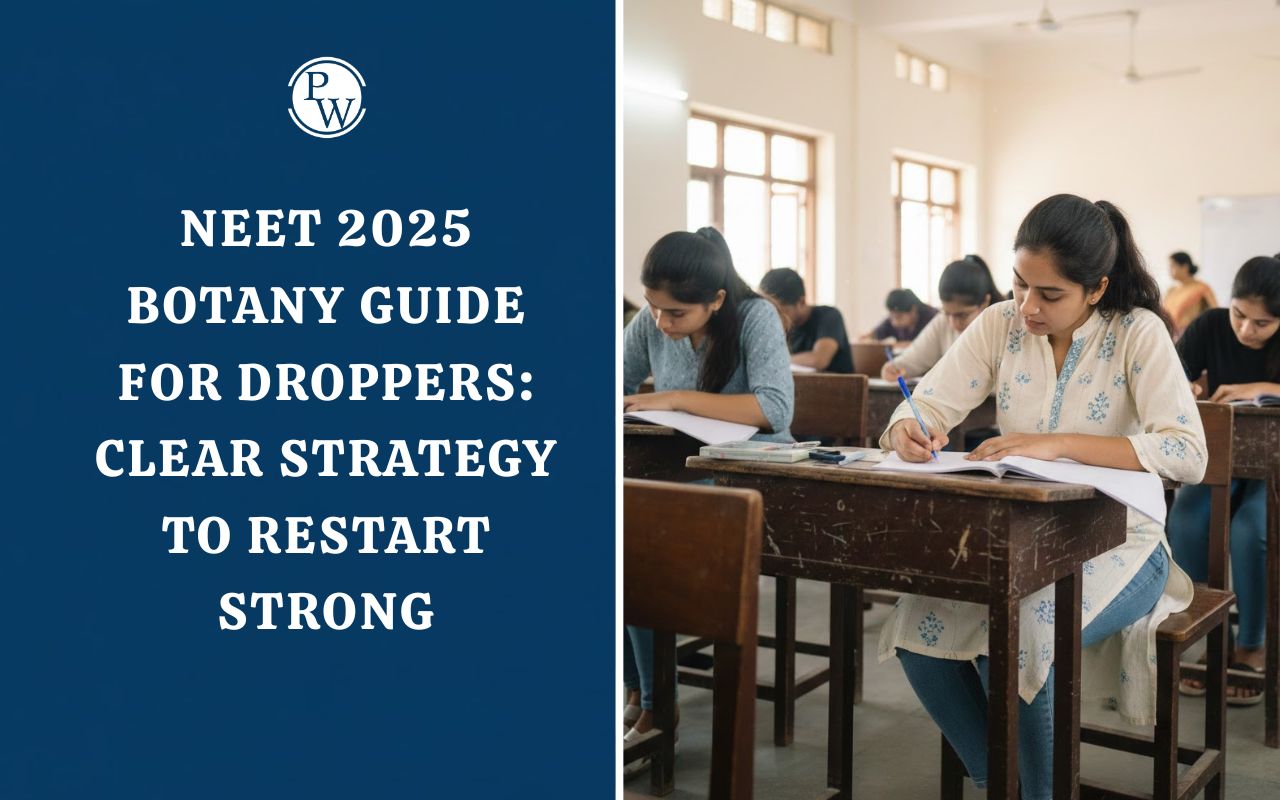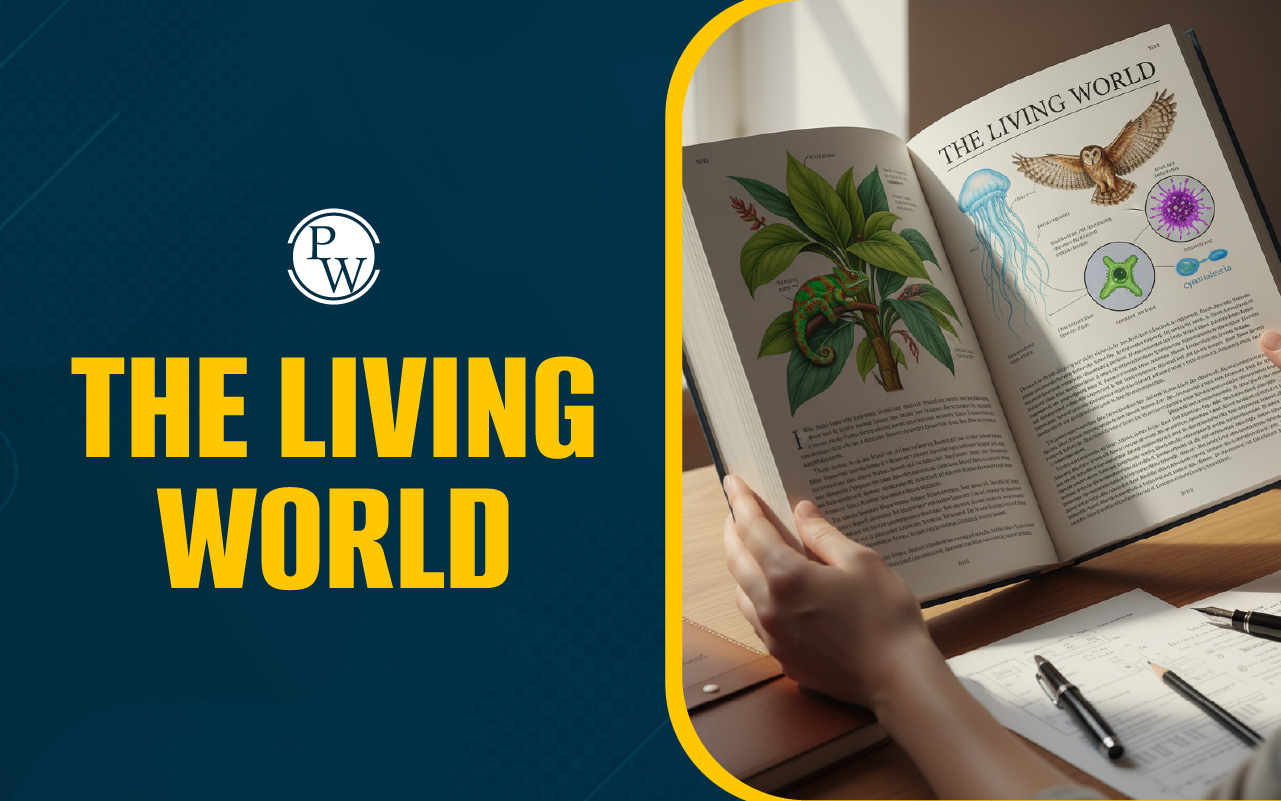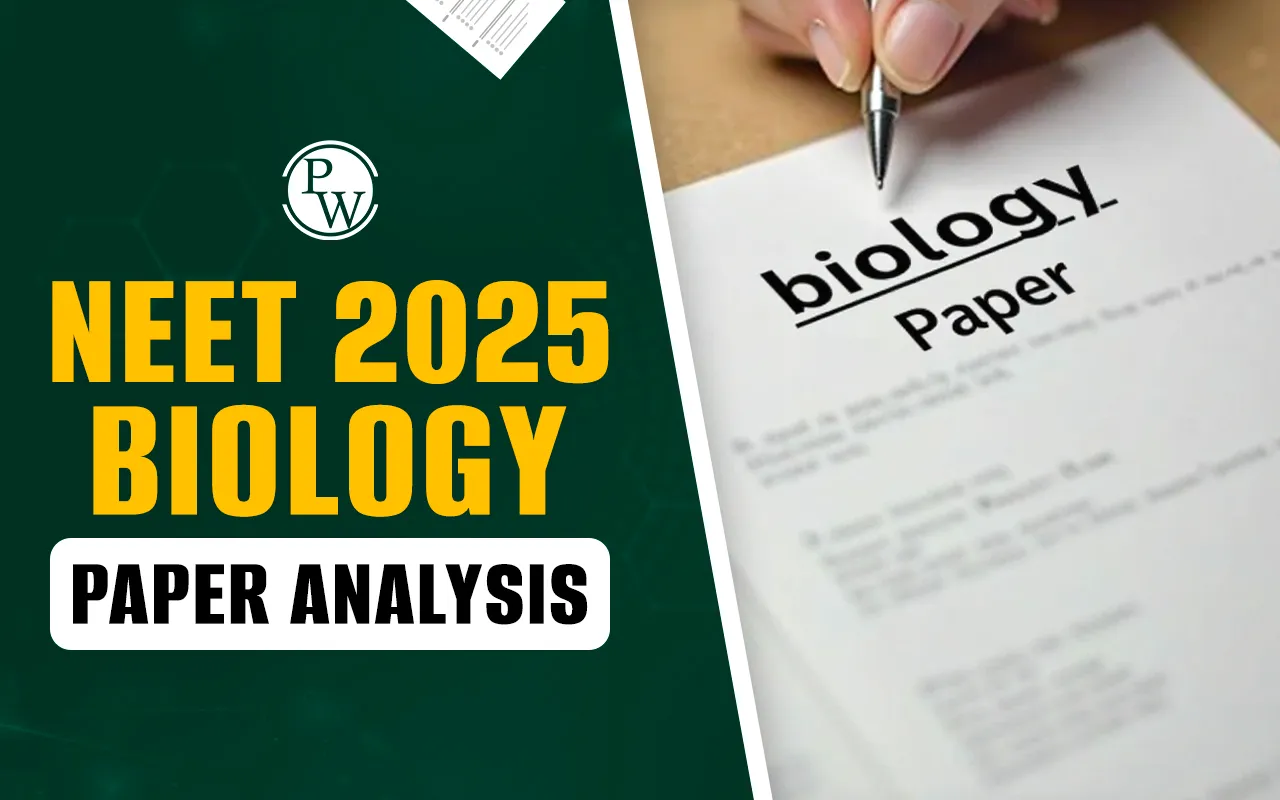

Organisms and Populations NEET MCQ Introduction
The area of biology known as ecology is concerned with interactions between organisms and their physical (abiotic) environments. The study of ecology is essential for finding a balance between resource use and conservation, the growth and preservation of biotic and environmental communities, and the resolution of local, regional, and global environmental issues. Organisms, populations, communities, and biomes are the main four levels of biological structure that it focuses on. The ecological organization on a hierarchy or level is related to the grouping of species in an ecological context. A large group of organisms interacts within their surroundings to form a population that controls the biotic and abiotic factors of the ecosystem. In this article, we will discuss some frequently asked Multiple-choice questions related to Organisms and Populations.| NEET 2025 Exam Important Links | |
|---|---|
| NEET 2025 Syllabus | NEET Biology Notes |
| NEET Cut Off 2024 | NEET 2025 Exam Pattern |
| NEET Previous Year Question Papers | NEET Sample Papers |
Organisms and Populations NEET MCQ
Q 1. The statement, "Two closely related species competing for the same resources cannot coexist indefinitely and the competitively inferior will eventually be eliminated," was made by whom?
- The Gause competitive exclusion principle
- The theory of mutation
- The theory of special creation
- The Organic Evolutionary Theory
Answer- Option (1) is correct.
Explanation: Gause's competitive exclusion principle provides the above clause. It claims that two species with the same resources cannot coexist under the same population levels. Natural selection will gradually remove the subpar species.
Q 2. What is the name of the interaction between species when one's fitness dominates the other's existence and fitness?
- Competition
- Mutualism
- Parasitism
- Commensalism
Answer- Option (1) is correct.
Explanation: In an interaction between competing organisms, the fitness of one organism predominates over its existence. These creatures, whether of the same species or a different one, compete for the same resources whether they are members of the same or distinct communities.
Q 3. Where does direct rivalry between individuals arise when there is interference?
- Two species share a similar predator
- One person limits the reproduction of others
- Organisms struggle for space
- Two different species compete for the same resources and habitat
Answer- Option (2) is correct.
Explanation: Interference competition occurs when one person stops others from reproducing. In addition to this, it also hinders the survival of other species. Aggression is one way it might happen, and it's believed to stabilize consumer-resource systems.
Q 4. What is characterized as a rivalry between members of two different species for the use of the same resources in the same territory?
- Apparent competition,
- Interspecific competition,
- Interference competition,
- Intraspecific competition.
Answer- Option (2) is correct.
Explanation: Interspecific competition is the struggle between members of different species over access to resources in a given region. An illustration is when tigers and lions that coexist in the same region fight over the same prey.
Q 5. In what situations does indirect competition arise during exploitation?
- Single organism interferes with the survival and procreation of others.
- Two species feed on the same prey.
- Two species compete with one another for resources and space.
- Organisms fight over shared space.
Answer- Option (4) is correct.
Explanation: Organisms fight with one another for resources like food, prey, or space in an indirect manner known as exploitation competition. As a result, resources become less and less readily available.
Q 6. Which two species exhibit indirect seeming competition?
- Battle it out for the territory,
- Battle it out for resources and mates,
- Share the same resources in the area,
- Have a common prey.
Answer- Option (4) is correct.
Explanation: The seeming rivalry arises between two species who compete for the same prey in an indirect manner. In this, one common predator may use both species as prey. It is an unfavorable indirect contact.
Q 7. Mutualism is what form of interaction?
- Positive Intraspecific,
- Negative Interspecific,
- Positive Interspecific
- Negative intraspecific
Answer- Option (3) is correct.
Explanation: Mutualism is an interspecific connection that is favorably oriented. It is a biological relationship in which organisms of various kinds get something from one another. Mutualisms are interactions between creatures of two distinct species that are beneficial to both organisms in various ways.
These interactions are frequent and pervasive in all ecosystems, and scientists are beginning to understand the significance of these interactions for ecology.Q 8. Who makes cellulase in the ungulates intestines?
- Mosses
- Bacteria
- Lichens
- Protozoa
Answer- Option (2) is correct.
Explanation: The cellulase is produced by many bacterial species in the gut of ungulates. The gut bacteria aid in the breakdown of cellulose since many of them are herbivores. Anaerobic bacteria make up the majority of gut microorganisms.
Q 9. A mycorrhiza exhibits what kind of interaction?
- Predation
- Parasitism
- Mutualism
- Commensalism
Answer- Option (3) is correct.
Explanation: A mutualistic relationship between fungi and plants is known as mycorrhiza. Mycorrhiza is necessary for the uptake of minerals (nitrogen, phosphorous, etc.) from the soil by about 80–90% of plants, while fungi depend on plants for vital elements like sugars for optimum development.
Q 10. Of the following assertions, which one is false?
- Siberian crane migrates,
- Hot springs with temperatures above 95 °C are ideal for archaebacteria to grow.
- The desert lizard can maintain a steady body temperature.
- Fish may survive and even flourish in the frigid waters of the Antarctic.
Answer- Option (3) is correct. Of the statements listed above, the desert lizard having the capacity to maintain a steady body temperature is false. This is true because lizards are ectotherms, cold-blooded animals whose body temperature fluctuates according to their environment.
Q 11. How does the body make up for the limited oxygen availability in altitude sickness?
- Increasing hemoglobin's affinity for binding molecules
- Slowing breathing rate
- Increasing the production of red blood cells
- Decreasing the hemoglobin's binding affinity
Answer- Option (3) is correct.
Explanation: The body increases the creation of red blood cells, which will enhance the intake of oxygen, to make up for the low oxygen availability seen during altitude sickness. Over 3500 m, or 8,000 feet, a person becomes ill from altitude sickness.
Q 12. What is the name of the characteristic of the creature that allows it to live and reproduce in its habitat?
- Homeostasis
- Adaptation
- Hibernation
- Migration
Answer- Option (2) is correct.
Explanation: An organism's ability to survive and reproduce in its environment is referred to as adaptation. It goes through an evolutionary process from generation to generation. It involves a quality, trait, or characteristic that benefits an organism in a certain environment.
Q 13. What is the name of the organism whose body temperature and the osmotic concentration of its body fluid, respectively, alter with ambient temperature and with the ambient water osmotic concentration?
- Regulators,
- Conformers,
- Migrants,
- Hibernating.
Answer- Option (2) is correct.
Explanation: Poikilotherms, or conformers, are organisms whose body temperature varies with the outside temperature. In aquatic species, this osmotic concentration of bodily fluid also varies with the osmotic concentration of the surrounding water. Examples include fish, lizards, insects, and more.
Q 14. Which of the following species has a variety of thick-walled spores that enable them to tolerate unfavorable circumstances and germinate when a suitable environment is present?
- Humans
- Fungi
- Banyan
- Mango
Answer- Option (2) is correct.
Explanation: Fungi create a variety of thick-walled spores that assist them in withstanding unfavorable circumstances and germinate when a suitable environment is present. Algae, lesser plants, and bacteria can also create these kinds of spores.
Q 15. Under unfavorable circumstances which state do snails enter?
- Diapause,
- Hibernation,
- Dormancy,
- Aestivation.
Answer- Option (4) is correct.
Explanation: In the summer, several fish and snails experience aestivation. It is extended dormancy, and another name for it is "summer sleep." In mostly cold-blooded creatures like earthworms, bees, tortoises, crocodiles, etc., it aids in regulating body temperature and prevents water loss.
Q 16. What state allows seeds to penetrate under unfavorable circumstances?
- Diapause
- Aestivation;
- Hibernation;
- Dormancy.
Answer- Option (4) is correct.
Explanation: When circumstances are unfavorable, seeds go into dormancy. Plants have an adaptive system that keeps seeds from sprouting. When the circumstances are right, it aids in delayed germination.
Q 17. Which of the following organisms does not undergo yearly migration?
- Salmon,
- Arc Tern,
- Salamander,
- Siberian Crane.
Answer- Option (3) is correct.
Explanation: The movement of organisms from one geographic place to another is called migration. It could be merely passing or ongoing. Each year, there is an annual migration. Of the possibilities listed above, salamanders do not exhibit a yearly migration.
Q 18. What is the definition of population density?
- The number of animals and plants in a specific area
- The number of people in a specific region in a specific amount of time
- The concentration of people
- The number of animals and plants in a specific location
Answer- Option (2) is correct.
Explanation: The population density provides information on the total number of people residing in a certain region at any given moment. It is a word used in geography. Overpopulation is a term used to describe nations with excessive population density.
Enroll in Physics Wallah's NEET Online Coaching for comprehensive exam preparation. Access engaging video lectures, interactive classes, and detailed study materials. Learn at your own pace, clarify doubts in real-time, and boost your confidence for the NEET exam.Organisms and Populations NEET MCQ FAQs
What is the population of an organism?
How are organisms and populations related?
What is the difference between an organism and a population?
What is called population?
What is called organism?












